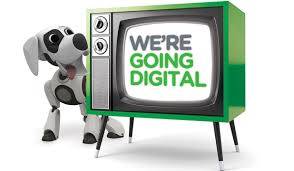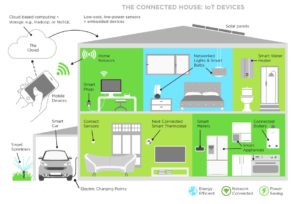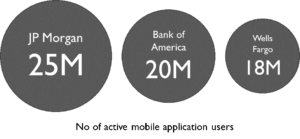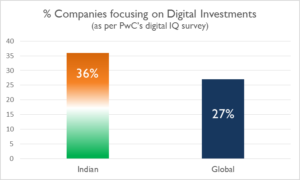Applications of IoT in Marketing
Change is the new constant. The confluence of people & technology has given rise to myriad possibilities of addressing the issues of mankind sustainability. There is a tectonic shift in technology that the world is experiencing today. Large or small organizations, rich or poor economies are witnessing the impact of a massive digital transformation. So, what do we mean when we say digital transformation or impact through digital initiatives or investments?
The Y2K generation witnessed the realization of Moore’s law, defining technological growth on a time scale. The advent of telephones, television, automobiles, personal computers, and mobile phones have been the hallmark of technological innovations in the last two centuries.
The world has witnessed the power of internet too. The terminology Internet of Things (IoT) is extensively used by organizations to its advantage to drive digital transformation strategies worldwide. Let us take a pause here to think – What is really significant about IoT as a technology?
What I term it as just another means of connectivity (to the internet). As we have seen before the connectivity of devices with Bluetooth, Zigbee (short distance connectivity protocols) creating a mesh of devices (endpoints which would be people in marketing) to make them communicable. Connectivity with Internet brings you the advantage of distance, complemented by the perils of being hacked! Apparently, there are pros and cons to technology.
Let me clear few things first. IoT or Digital technologies are not only limited to creating websites and social media pages. In fact, digital initiatives are focused more towards capturing and analyzing vast data that is generated from people, products, process, applications or operations that are analysed to generate insights that make faster, accurate and unbiased (data driven) results.
Well, let me share an experience I had while attending a Smart Products exhibition in the US. Imagine every appliance in your house is connected to the Internet (Internet of Things) right from your weighing scale in the bathroom, to your refrigerator, microwave, coffee machine, washing machine etc. Now, when you check your weight on the weighing scale (say it is overweight), it records your weight and sends it to all the appliances in your house. After the bath, when you go for the breakfast, your refrigerator (which has an inbuilt camera) will prompt that since you are overweight, you cannot eat high fat items like cheese, milk, cake etc. kept in the refrigerator (an appliance that cares about your health). Now, based on the low fat items in the refrigerator, your microwave will prompt you that it can prepare say 15 recipes (available from internet) that are recommended for healthy eating. This is the future Smart Home!
This is how the day to day products are going digital and data generated from such products are used by OEMs to understand their customer’s behavior, usage patterns and suggest products that suit their style and need. This will be a more focused marketing strategy that will be very specific to their customers.
Consider an example of banking sector which is one of the fastest in the race to adopt digital technologies. Be it e-banking or ATMs, digital adoption by banks and consumers have changed the definition of banking. Today, banking is no longer a ‘trip to the branch’. So what are the impacts of going digital? Well, for customers, it is ease of banking, faster transactions, and for banks it is engaged and satisfied customers, improved reach (24×7 service), customized banking depending on different users, improved sales and much more. Mobile banking has led to improved customer satisfaction, primarily due to digital offerings (1). Similarly, linking Aadhar no with bank accounts and e-filing has fasten the tax filing process, resulting in improved experience and faster transactions.
What we just experienced was an impact of going digital. So what you as a consumer will get out of using such appliances or services? Ease, Comfort, Quality Lifestyle, Satisfaction and much more. So, the BIG question, how do we measure the impacts, the returns that we achieve by investing in digital technologies / initiatives?
The answer is through ‘DATA’.
Every business measures some key performance indicators (KPIs) by which they predict the outcomes of their business like profit & loss, revenues, customer satisfaction, productivity, efficiency etc. So when it comes to measuring the returns from implementing digital strategies, it is different from traditional ROI calculation techniques. With conventional offline marketing strategies, the data of consumers was not available, but to measure ROI on digital strategies, analyzing data plays a crucial role.
Let me highlight some cases from the industry.
In a manufacturing setup (talking about Industry 4.0*), it calls for connected manufacturing where different functions like purchase, finance, quality, HR, production, supply chain & logistics are working in cohesion.
Data generated from these process are analysed to improve productivity, reduce waste, optimize process etc. Even in case of smart products, capturing information like usability, time of operation, field failure data, and warranty data will help measure customer satisfaction levels (which in turn will drive revenue), improved aftermarket sales will lead to customer longevity (stickiness).
Today, in the retail sector, where there are so many options available for consumers, the BIG retail chains thrive on the consumer data to find answers to business questions. Retail companies have developed and deployed human behaviour models based on consumer spend data, consumer’s sentiment for particular brand, age group, family composition, lifestyle etc. They are investing in creating data based model to drive decisions which leads to customized & focused marketing for every consumer resulting in saving unnecessary marketing efforts and optimize the sales engine.
Measuring ROI on digital initiatives can be challenging
However, if you look at business like OLA or UBER which are 100% application based quantify their earnings by no. of rides booked, cancelled, time of rides, frequency of rides, customer scores and rating etc. Moreover, e-commerce companies are promoting offers on app based purchases which clearly indicates that factors like trust, customer engagement, and application usage are on the high which can be eventually measured. The data from these apps is used by companies to predict customer behaviors as in when and what will they buy next!
The vast explosion of data certainly has made the consumer more informed, but is also assisting the companies to make more informed decisions in terms of investment in new products, time to market, understanding behavioral patterns and much more. In the world of digital, it is not the fittest, but it is the survival of fastest. Siloed approach has hindered the measurement of digital impact, but defining right metrics, capturing relevant data and performing data analysis that drive business outcomes will alleviate the ROI measurement. The business that can implement such a process are here to reap rich benefits.
References:
(1) J.D. Power 2016 U.S. Retail Banking Satisfaction Study
*Industrie 4.0 – The smart manufacturing concept that calls for connecting systems and process to analyse data and come up with optimization, predictive insights to improve the manufacturing throughput.
**Capgemini & MIT Sloan Management Review Report
Smart Home image source – Upwork, Gekko.
PwC Digital IQ Survey







